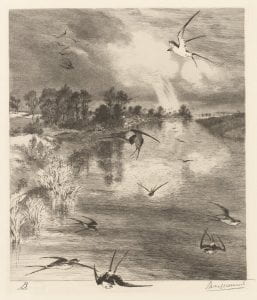Les Hirondelles (The swallows) by Felix Bracquemond
Les Hirondelles, or The swallows, is an 1882 print by French artist Felix Bracquemond (1833-1914). Bracquemond is today celebrated for his efforts to revive the printmaking arts, and for pioneering Japonisme in France. This artistic style greatly influenced the Modernist movement with its familiar names from Manet and Van Gogh to the Impressionists.

Continue reading “Les Hirondelles (The swallows) by Felix Bracquemond”



